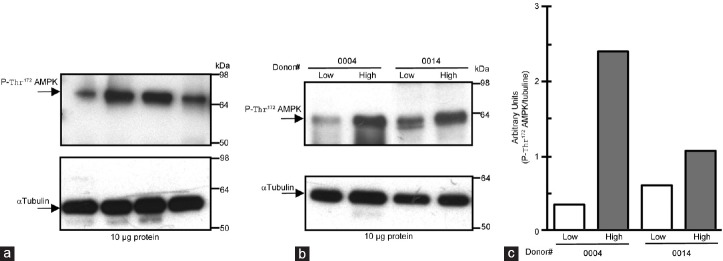Figure 4.
Identification of phospho-Thr172-AMPK (active) in human spermatozoa, which is predominant in the high motility sperm population. (a) Proteins (10 μg) from same human sperm lysates used in Figure 3 were analyzed by Western blot using anti-phospho-Thr172-AMPKα as the primary antibody. Arrows indicate the cross-reactive band of phosphorylated AMPK protein recognized by the antibody. Molecular weight markers are indicated in KDa. Loading control was performed for each experiment in the same membrane using the anti-α tubulin antibody and is shown in the lower panels. This experiment was performed seven times and a representative film is shown. (b) Each human ejaculate was fractioned by a 40%–80% density gradient in high and low motility sperm populations and AMPK phosphorylation was analyzed. This experiment was performed five times and a representative film (with n = 2) is shown. (c) Densitometric quantitation of the phospho-Thr172-AMPKα bands obtained in each fraction (high and low). Values obtained for phospho-Thr172-AMPK bands were normalized with values of α-tubulin.

